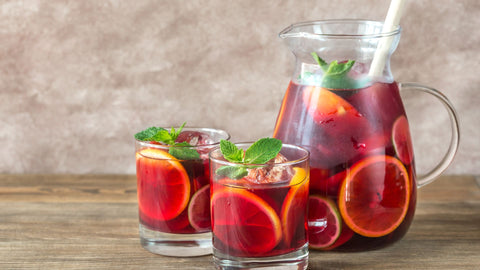Easy Traditional Red Sangria: Impress Your Guests with Homemade Magic
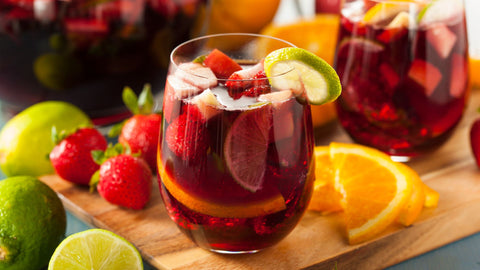
Everything You Need to Know About Sangria
Imagine this: you've planned a gathering with friends and family. The laughter simmers, delicious food fills the air, and everyone's looking forward to a refreshing drink. Instead of running to the store for a bottle of something generic, you unveil a pitcher of ruby-red sangria bursting with fresh fruit. The compliments roll in – "This is amazing! Did you get it from a bar?" The answer, of course, is a secret smile and the satisfaction of knowing you crafted this crowd-pleaser yourself.
Sangria, a festive and flavorful wine punch, is notoriously easy to make at home. But did you know its history stretches back centuries, originating in Spain? Let's explore the origins of this delightful drink and guide you through a step-by-step recipe for creating an easy traditional red sangria that will have your guests raving.
Origins of Sangria

While the exact origin story remains debatable, historical evidence suggests sangria emerged in Spain sometime in the 15th or 16th century (https://en.wikipedia.org/wiki/Sangria). Back then, grapes were plentiful in the regions of Rioja and Galicia, and sangria likely arose as a way to utilize abundant harvests and add a touch of sweetness to red wine. The name "sangria" itself comes from the Spanish word "sangre," meaning "blood," referencing the drink's vibrant red color.
Over the centuries, sangria gained popularity throughout Europe and eventually reached the Americas. Today, it's a global staple, enjoyed for its refreshing taste and versatility.
Easy Traditional Red Sangria
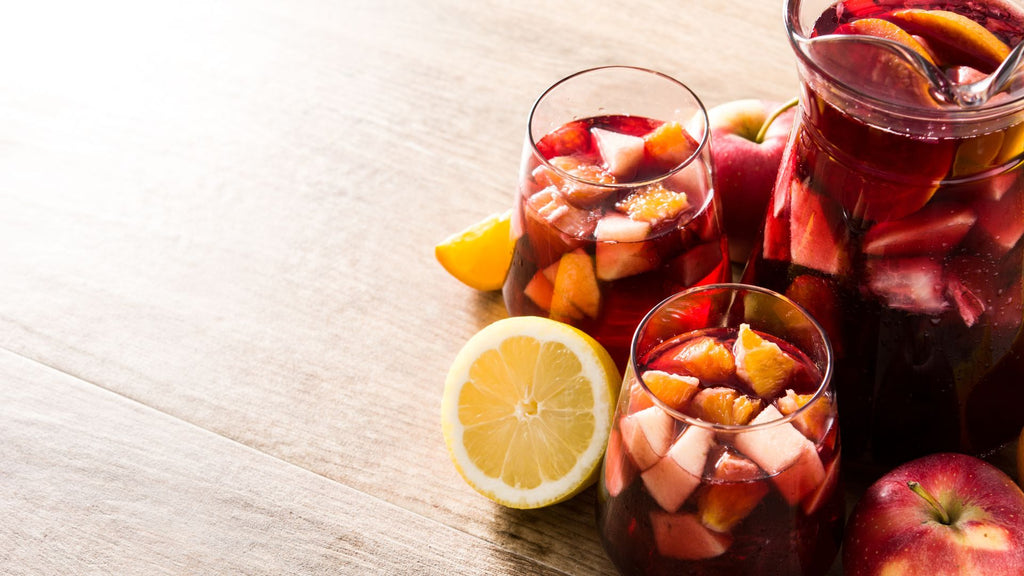
Now, let's get to the fun part: creating your own homemade sangria! This recipe yields roughly four servings, perfect for a small gathering or cozy night in.
Ingredients:
- 1 (750ml) bottle of dry Spanish red wine (Rioja or Tempranillo are good choices)
- 1/2 cup brandy (cognac or orange liqueur can be substituted)
- 3/4 cup orange juice
- 1/4 cup granulated sugar (or to taste)
- 1 medium apple, cored and diced
- 1 medium orange, thinly sliced
- 1 lemon, thinly sliced
- 1 cinnamon stick (optional)
Instructions:
Prep the fruit: In a large pitcher, combine the diced apple, sliced orange, and sliced lemon.
Sweeten it up: Add the sugar to the pitcher and muddle the fruit gently with a muddler or wooden spoon to release the juices and flavors.
Add the liquids: Pour in the red wine, brandy (or substitute), and orange juice. Stir well to combine all the ingredients.
Let the flavors meld: Cover the pitcher and refrigerate the sangria for at least 2 hours, or ideally overnight. This allows the fruits to infuse the wine with their delicious flavors.
Serve it up!: When ready to serve, fill glasses with ice cubes. Strain the sangria into the glasses, ensuring some fruit pieces make it into each serving. Garnish with an orange slice or a cinnamon stick, if desired.
Notes:
For a more intense fruit flavor, let the sangria sit in the refrigerator for up to 24 hours.
Don't be afraid to adjust the sweetness to your preference. Start with a little less sugar and add more to taste during step 2.
Feeling adventurous? Add a splash of club soda or sparkling water for a touch of fizz.
Nutrition (1 of 4 servings)
Calories: 200
Fat: 0g
Carbohydrates: 23g
Sugar: 18g
Protein: 0g
Source: https://www.nutritionvalue.org/Sangria%2C_red_93404550_nutritional_value.html
Spanish Sangria Ingredients:
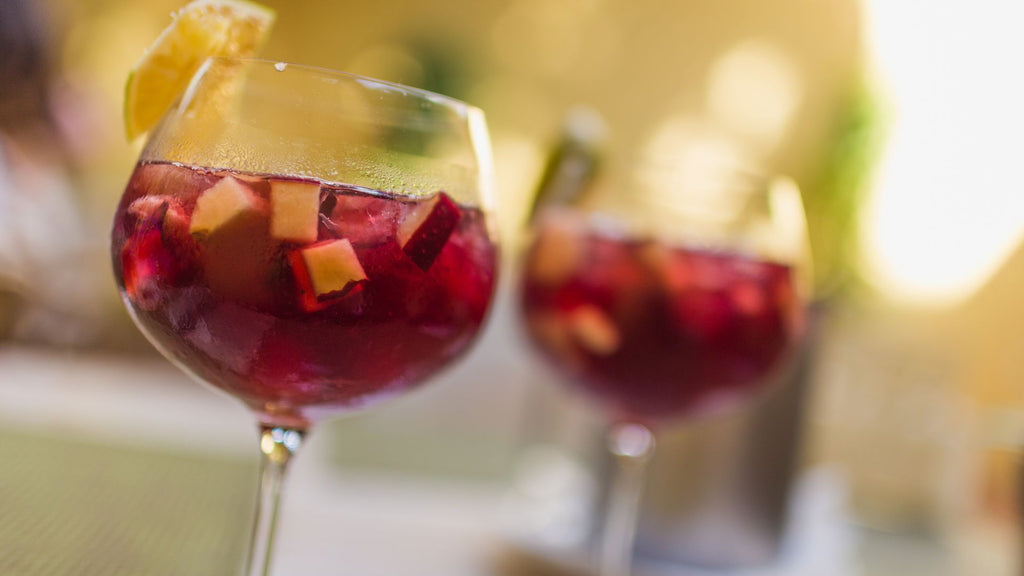
While the easy traditional red sangria is a crowd-pleaser, there are ways to delve deeper into the world of sangria and explore its Spanish roots. Here are some additional ingredients you might find used in more authentic Spanish sangria recipes:
-
Spanish red wine: A decent Rioja or another Spanish red wine adds a touch of authenticity.
-
Brandy: This is the traditional spirit used in Spanish sangria, but cognac or orange liqueur can work as substitutes.
-
Fresh fruit: Oranges, lemons, and green apples are staples, but feel free to experiment with peaches, pears, or berries.
-
Cinnamon stick: A common spice that adds a warm depth of flavor.
-
Sweetener: Sugar or brown sugar are popular choices, but some recipes use simple syrup, honey, or maple syrup.
How To Make Sangria:
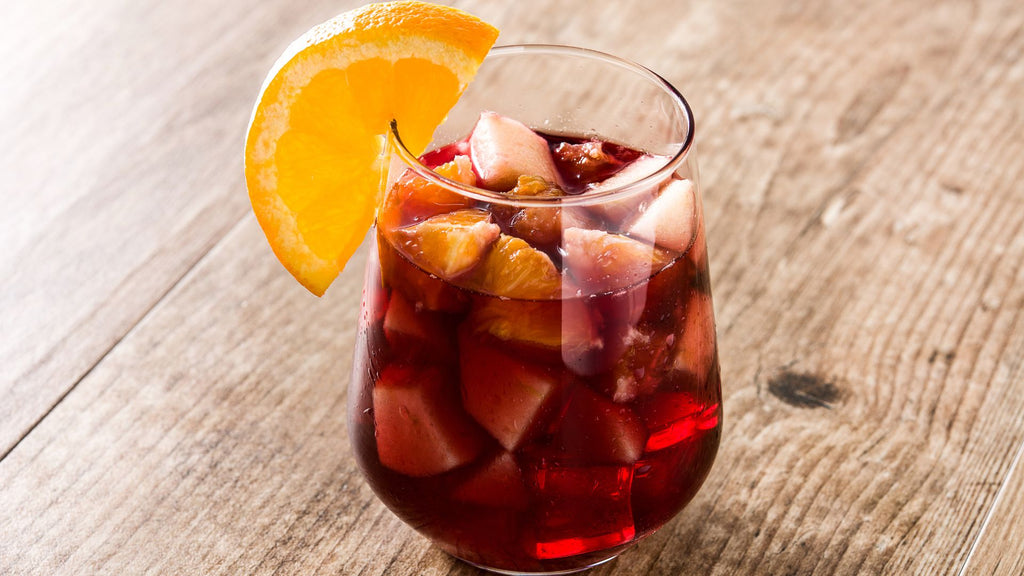
Now that you're familiar with the ingredients, let's explore the steps involved in creating a delicious sangria. Here's a breakdown that incorporates the best aspects of various approaches:
-
Prep the Fruit: Washing and prepping the fruit is the first step. Depending on the recipe, you might need to simply slice or dice the fruit, or in some cases, muddle them slightly to release their flavors.
-
Combine Ingredients: In a large pitcher, add the prepped fruit, your chosen sweetener, and any additional flavorings like cinnamon sticks.
-
Liquids and Sweetening: Pour in the red wine, brandy or chosen substitute, and any fruit juices like orange juice. Here's where taste comes in! Start with a slightly less amount of sugar than you think you might need, and stir or muddle the ingredients together. Give it a taste and adjust the sweetness according to your preference.
-
Let it Mingle: Cover the pitcher and refrigerate the sangria for at least a few hours, but ideally overnight. This allows the flavors to meld beautifully, creating a more complex and delicious sangria.
-
Serving Time!: When you're ready to serve, fill glasses with ice cubes. Strain the sangria into the glasses, ensuring some fruit pieces make it into each serving. Garnish with an orange slice, a cinnamon stick, or a sprig of mint, depending on your chosen recipe.
Sangria Recipe Variations:
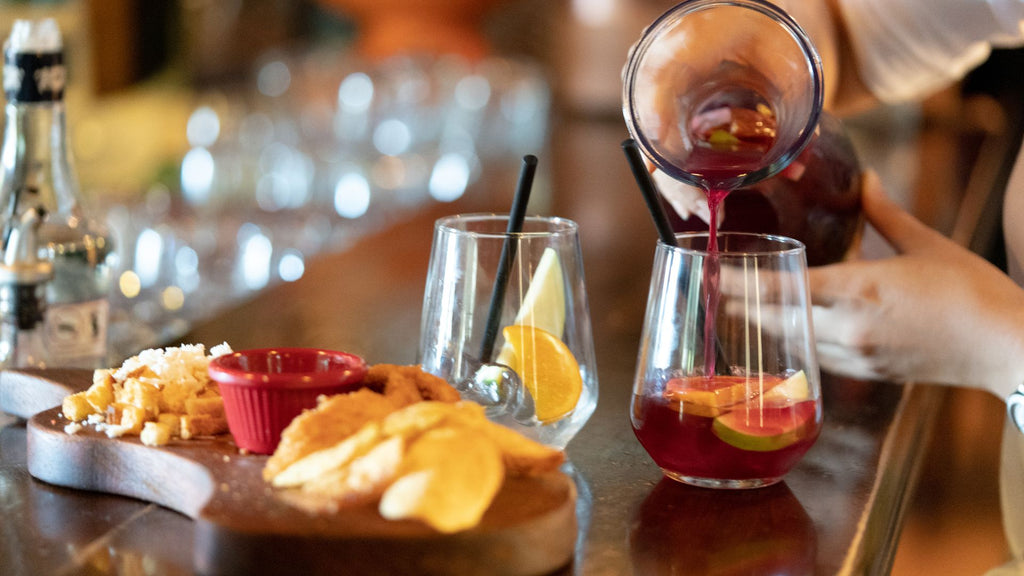
The beauty of sangria lies in its versatility. Here are some exciting ways to customize your sangria recipe and create your own signature drink:
- Fruity Fiesta: Swap out the classic fruits for peaches, pears, berries, or even a combination! Experiment with seasonal fruits to add a fresh twist.
- Sparkling Surprise: For a touch of fizz, add a splash of club soda or sparkling water just before serving. This is a great way to lighten the drink and make it extra refreshing on a hot summer day.
- Spicy Twist: Feeling adventurous? Add a few slices of fresh ginger or a jalapeño pepper (seeds removed) for a touch of heat.
- White Wine Sangria: Who says sangria has to be red? Opt for a dry white wine and pair it with lighter fruits like grapes, kiwi, and apples. Experiment with different liqueurs like white rum or elderflower liqueur for a unique twist.
Notes:
- Sangria is best enjoyed fresh, so make it within a day or two of serving. Leftovers can be stored in the refrigerator for up to 3 days, but the fruit may lose some of its crispness.
- Don't be afraid to get creative! Sangria is a forgiving drink, so experiment with different flavors and ingredients to find your perfect combination.
There are many resources available online and in libraries if you'd like to delve deeper into the world of mixology and explore a wider range of cocktails. But for those who love to entertain at home and impress their guests with delicious homemade drinks, sangria is a fantastic option.
Beyond Sangria: Mastering Mixology at Home
While sangria is a crowd-pleaser, what if you want to expand your cocktail repertoire and create a variety of impressive drinks for your gatherings? Consider enrolling in an online bartending course like Barprints' Mixology Mastery. These courses can teach you the fundamentals of mixology, equip you with essential techniques, and provide a platform to explore a vast array of classic cocktails and signature creations.
With the knowledge and skills gained from a quality online bartending course, you'll be well on your way to becoming the star of your next gathering, dazzling your guests with an impressive selection of handcrafted cocktails. So, the next time you plan a get-together, think beyond store-bought beverages and embrace the magic of creating show-stopping drinks from the comfort of your own home.
Now that you're armed with the knowledge and inspiration to create delicious sangria variations, what unique flavors will you experiment with first?

